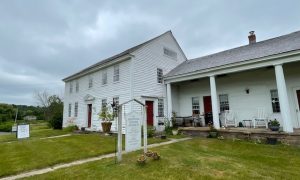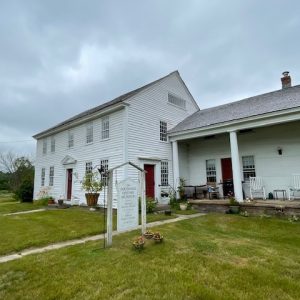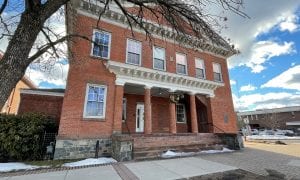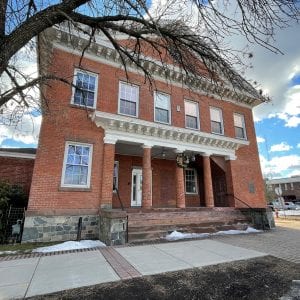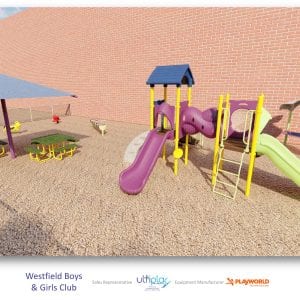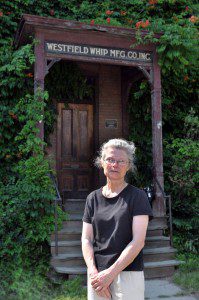
Carol Martin, owner of Westfield Whip Mfg. Co. Inc., stands in front of her company located at 360 Elm Street in Westfield. The factory was established in the late 1800’s. (Photo by chief photographer Frederick Gore)
WESTFIELD – Attorney Peter Martin, president of the Westfield Museum Inc., presented two proposals for the historical preservation of the exterior of the last operating whip-manufacturing factory in the city.
Martin presented the Historic Commission with two options, both of which contracts would give that commission authority over the exterior appearance of the building. The options are a matter of timing, as the museum group prepares to seek funds from the Community Preservation Commission to begin the rehabilitation of the building’s exterior.
“The reason we’re here,” Martin said, ” is that we’re going back to the CPC seeking additional funding for the preservation of the building, which is part of Westfield’s industrial heritage.”
Carol Martin said that in the late 1800’s, when the building was constructed, there were 40 active whip-manufacturing plants in the city. The building, located at 360 Elm Street, is the last of those plants that contains, and still uses, much of the machinery from that period in its current whip production – machinery that was designed and built in Westfield. Patent documents for that technology would eventually be part of the museum display.
The building was constructed in 1894 and is currently listed on the National Registry of Historic places.
Peter Martin said the historical preservation restrictions now being considered by the commission are based on the preservation document approved by the mayor and City Council for the Dewey House on South Maple Street.
The Community Preservation Committee voted in July to accept a feasibility study to create a living museum to preserve the city’s historical industrial past, clearing the way for the next step in developing the museum proposal.
The museum concept was initiated to create a living museum at 360 Elm Street, the city’s last whip manufacturer, but Carol Martin, who owns the Westfield Whip Manufacturing Company, said last night that WHIPP, Inc. recently merged with Westfield Museum Inc., a group formed to showcase the city’s industrial history, thus expanding the scope of the original living museum concept to include a display area that will be used for other aspects of the city’s industrial past. The merger of the two 501-C3 organizations was effective as of July 1.
“The concept has grown broader to be a museum of Westfield’s industrial past from the Industrial Revolution to World War II,” Carol Martin said.
The feasibility study also included an educational component, working with Westfield State University to create instructional blocks for the city’s school district through field trips to the museum.
Peter Martin said the historical exhibits would be changed on a quarterly basis and that a unique aspect of the working museum is that employees will be present during the work week to increase access to the facility, as well as weekends when it will be staffed by volunteers.
“This is Westfield’s signature industry,” Martin said, “so the city has a vested interest in maintaining the exterior envelope of this building in perpetuity. Any changes would have to be approved by the Historical Commission.”
Carol Martin said that in addition to city, state and federal grants, the group will raise money from a variety of interest groups.
“A lot of support for the museum comes from the equestrian field, so it’s not just drawing from Westfield for fund raising support,” Martin said. “The unique machinery used in the hand manufacture of whips draws interest from around the world.”
Peter Martin said the consulting firm of Tighe & Bond of Westfield has performed as assessment of the building’s structure and that an architect is working with that information to develop the construction plans. The museum group plans to request bids from contractors, with cost estimates, before it approaches the CPC for additional funding.

